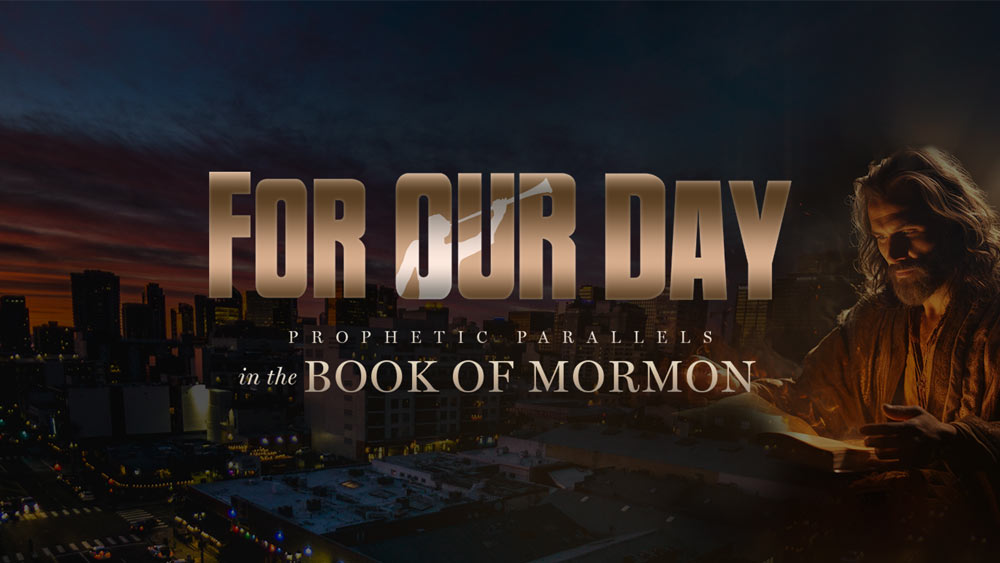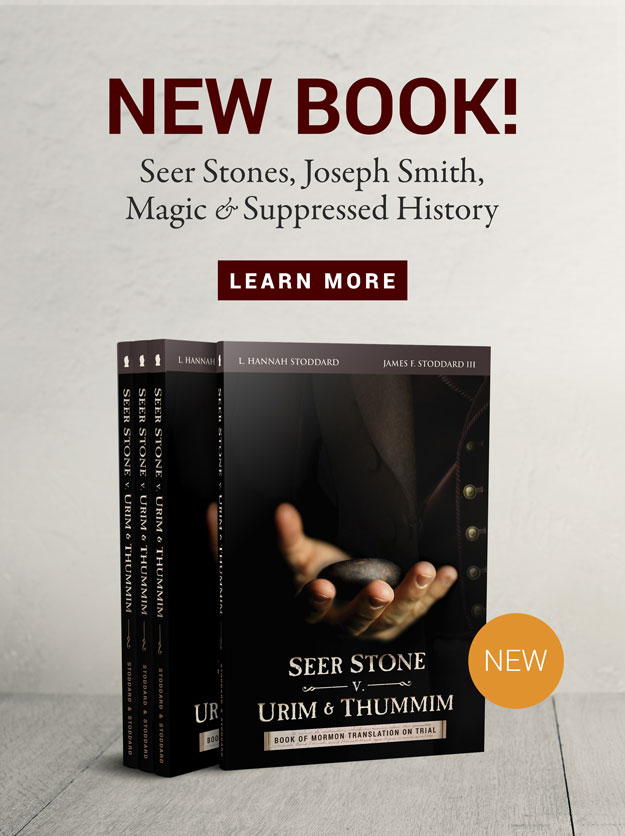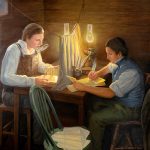Associated Locations:
- Plympton, England – Birthplace
Associated Dates:
- 16 July 1723 – Born
Joshua Reynolds is one of the eminent spirits who appeared to President Wilford Woodruff in the St. George Temple on August 21, 1877. This interesting story is detailed in the Eminent Spirits Appear to Wilford Woodruff wiki.
“What we now call Genius, begins, not where rules, abstractly taken end, but where known vulgar and trite rules have no longer any place.”
– Joshua Reynolds
Life Sketch from The Other Eminent Men of Wilford Woodruff
Copyright © Taken from the book: The Other Eminent Men of Wilford Woodruff. Special thanks to Vicki Jo Anderson. Please do not copy.
English Painter 1723-1792
Notwithstanding the great achievements in literature through the 1700s, the arts in England in general had fallen to their lowest state. The tradition of Puritanism confused the beautiful art with sensual art, thereby inhibiting the development of new talent. ‘The Puritan Reformation brought to England and Scotland a way of intolerance, intense and bitter beyond even the developments in Germany and Holland. The rich medieval arts of Britain, painting, sculpture, and ornamentation, which survived through the days of the Tudors and the Stuarts, were wiped out in a stroke. In the 1600’s English Parliament mandated the destruction of much artwork. A single entry in the records of 1643 states: We brake down 1000 pictures superstitious.’ It was into this artistic climate that Sir Joshua Reynolds was born.
Early Life

Joshua Reynolds was born in 1723. He was the son of the Revered Samuel Reynolds and Theophila Potter, the seventh of eleven children. His father was a master of a grammar school but for some reason lost that position. Joshua became his only pupil, and he studied under his father’s tutelage until he was seventeen. Although his father instructed him in the classics, Joshua gave no sign of classical interest. However, in later years, after studious application, he became eminently distinguished as a classical scholar.
Young Joshua did not display any extraordinary skill, but when known from childhood to make little sketches. One day, when Joshua was about twelve, listening to Reverend Smart’s sermon, Joshua made a sketch of the Reverend. Taking the sketch he proceeded to the boathouse, and there using sail canvas and marine paint, he painted his first portrait (still in existence today.) His father/schoolmaster once discovered his son’s Latin exercise book elaborately “doodled,” and wrote, commenting in the margin, “This is drawn by Joshua in school out of sheer idleness.” As the years continued Reynolds filled his leisure hours with his pencil.
Reynolds’ father had set his mind on medicine as a career for his promising son and was about to apprentice him to the local apothecary. However, Reynolds’ “genius for drawing” persuaded the father in the interest of his son to change his plans.
Learning to Paint

Hudson, a portrait artist of the time, came to pay a visit to a Mr. Cutcliffe, a friend of Reynolds’ father. Reynolds’ father prevailed upon Mr. Cutcliffe to show Joshua’s drawings to Hudson to ascertain if he would consider the lad for a pupil. “Everything jumped out in a strange, unexpected manner to a miracle.” and he was accepted as an apprentice. Half of the tuition was paid by the good reverend and half was a loan by a kindly sister.
When Joshua first arrived in London, painting was mechanical. “The art,” he said, “was at the lowest ebb: it could not indeed be lower.” Although Hudson’s instructions were barely adequate, Joshua did not seem to care. He wrote to his father saying, “While I am doing this [art] I am the happiest creature alive.” After two years of instruction, Joshua painted a portrait of an elderly lady with such artistic superiority that it aroused the jealousy of his master. They soon parted ways, for in truth such teachers as Hudson could teach Reynolds nothing further.
Reynolds spent the first few years in and around London, painting to make a living. When Reynolds was released from the “mechanical” productions of Hudson, he turned to paint nature with contact with “Commodore Keppel.” Reynolds painted the commodore’s portrait, which turned out to be the best he had ever done, and the two men became good friends. Keppel invited Reynolds to accompany him to the Mediterranean. Reynolds debarked from Keppel’s ship at the Island Minorca, having painted enough portraits to finance his pilgrimage to Italy . He had long desired to study the great masters in Italy, for he felt that Italy was the mother and nurse of the arts.
Studying Art
Arriving in Rome, he was at last able to see the fine works of Raphael, and to his mortification he was unable to appreciate them. He began to see that the art of the great masters was not to be understood immediately, and that it took great study and time to fully perceive the profundity of their works. He later remarked, “Notwithstanding my disappointment … I viewed them again and again; I even affected to feel their merits, and to admire them more than I really did. In a short time a new taste and new perceptions began to dawn upon me, and I was convinced that I had originally formed a false opinion of the perfection of art.” . . . He spent a great amount of time in the Vatican. Due to the dampness there he caught a gold that left him partially deaf the rest of his life.
“The Dream of a Painter”

One of Reynold’s students later found a writing by Reynolds titled, “The Dream of a Painter.” In the narration Reynolds told of having spent a day studying in the Vatican. He stopped to rest not realizing the lateness of the hour. “I was so entirely absorbed in thought,” he wrote, “that whether I really slept or seemed to sleep, I will not determine; but me though a form like that of an angel approached, and addressing me with mild air, said, ‘You have enlisted under the banner of the arts, fine arts you call them, a noble and bold resolution, where labor and study may be rewarded with immorality.” Reynolds was taken on a tour by the angelic visitor. The description he gives of the vision is like Isaiah in style. The lives of the early master of art were shown to him. (The whole of the vision cannot be related here, but interesting highlights will be attempted.)
Leonardo da Vinci, with his patron, Francis the First of France, were presented to Reynolds. Leonardo was surrounded by ingenious contrivances which he himself designed. Reynolds angelic guide pointed out that Da Vinci had been “endowed with an ample capacity to embrace the whole circle of the sciences.”
. . . .
Among other great artists shown to Reynolds in this vision were Raphael, from whom beauties instantly sprang and the orphaned Pierino del Vaga, who was placed in Raphael’s care. Titian passed with Pordenone, the Bassanos, Girloamo, Mutiano, Giacomo, Palma and other artists bearing the train of his robe. Titian was also accompanied by Tintoretto and Paul Veronese. Preceding them went Bellino and Georgione, both bearing a light in each hands so luminous that the whole group shone with splendor. The vision followed with the unfortunate Correggio, Annibal and the disgrace of Guido Reni, FredericoBaroccio, Claude Gelee of Lorrain, Nicolo Foussin, Salvator Rosa, Vandervelde, and the duo Chevalier Adrian Bander Welf and Balthasar Denner, The strengths and weaknesses of each artist were revealed to Reynolds in this vision.
The last artist he saw had no name given, but his guide told him that this artist was an Englishman. Reynolds observed that this artist’s manner at once distinguished him as a man of refined mind, his carriage was unassuming, gentle, and simple to the utmost degree.; he appeared to be untouched by vanity, although attended by a great company of grave philosophers, divines, and poets, who all paid him homage, which he received with the humility and simplicity of a child.
In his narration Reynolds did not attempt to name the artist either, however, reviewing Reynolds’ life, it is obvious that the last artist was Reynolds himself. In his later years he lived to fulfill all the virtues extolled by the angel. His contemporaries confirmed these virtues. Dr. Samuel Johnson said of Reynolds, “There goes a man not to be spoiled by prosperity.” Edmund Burke recorded of Reynolds that, “his native humility, modest, and candor never forsook him.”
Painting Portraits

When Reynolds returned to England, he immediately made a name for himself by painting portraits. This he did in a “novel, simple and natural, yet so dignified” manner. His master talent was painted the qualities of the sitter. This was particularly true of his portraitures of women. Reynolds often said that a writer has an entire book to tell his story, but an artist has but one page. He was intent on that one page, expressing the finest qualities of he individual being painted, It has been said hat a painter cannot make his hero talk like a great man. He must make him look alike a great man. Reynolds’ portraits could be studied to help us understand what constitutes “dignity of appearance” in real life. “Polite behavior,” he wrote, “and a refined address, like good pictures make the least show to ordinary eyes.”
Time has a way of savoring that which is most enduring. Reynolds great contribution to the world was not only in his actual paintings, even though he was the leading portrait artist of his day, but also in his contribution in promoting the dignity of art.
Birth of Royal Academy
Because of his influence artists of the time began joining together for art exhibitions. These exhibitions eventually led to King George III, in 1765, granting a royal charter. By 1768, this organization became known as the Royal Academy. Reynolds, by acclamation, was elected its first president, a position he held for over twenty years. It was on the occasion of his first election that Reynolds was knighted. It was not only providential that the Academy came into being at this time because of the number of excellent artists (Gainsborough, Romney etc.) but also because Reynolds felt a need to begin a repository for great examples of art, “These,” he said of the collection of great art “are the materials on which genius is to work.” The Royal Academy exists today. It is world famous for its promotions of meritorious arts.
As part of his role as president of the academy, Reynolds annually addressed its members. These now famous discourses alone would have entitled him to literary fame. They were seen as the highlight of the season. In a land long starved for the uplifting touch of refining arts, these discourses were like manna from heaven.

These discourses were so eloquent that it has been said that they were written by the literary giant of the time, Samuel Johnson.
However, Johnson was ignorant of art as was the rest of England, so the plagiarism charge fell idle. In fact, Johnson desired so much to have Reynolds as an acquaintance that he sat on Reynold’s doorstep on three different occasions, trying to gain an audience with the great painter. Reynolds soon relented and there quickly developed a deep and abiding friendship. This friendship had a substantial effect upon England, and even today is looked upon as one of the cornerstones of English history.
Reynolds could recognize greatness wherever it was found, and he suggested that Dr. Johnson form the famous literary club. This club operated for more than half a century and its members were many of the most celebrated personalities of the late 1700s. To this club came the great tragedian actors Garrick and Kemble, the historian Gibbon, the great writer of comedy, Oliver Goldsmith, and others.
Character
Reynolds was as great in character as he was in painting. Once his servant was mistakenly arrested and held overnight. Upon his return to Reynolds, the servant told him of a poor soul being held awaiting his death sentence. Reynolds promptly dispatched another servant, named Kirkly, to make inquiries,
He was soon admitted to the cell of the prisoner, where he beheld the most wretched spectacle that imagination can conceive—a poor forlorn criminal, without a friend on earth who could relieve or assist him, and reduced almost to a skeleton by famine and by filth, waiting till the dreadful morning should arrive when he was to be made an end of by violent death. Sir Joshua now ordered fresh clothing to be sent to him, and also that the servant should carry to him every day a sufficient supply of food from his own table.”
Another incident demonstrates Reynolds’ integrity. In a letter written to Dr. Beattie, he said:
I sit down to relieve my mind from great anxiety and uneasiness, and I am sorry when I say, that his proceeds from not answering your letter sooner. This seems very strange, you will say, since the cause may be so easily removed; but the truth of the matter is, I waited to be able to inform you, that your picture is finished, which, however, I cannot now do. I must confess to you, that when I sat down, I did intend to tell a sort of a white lie, that it was finished; bit on recollecting that I was writing to the author of truth, about a picture of truth, I felt that I ought to say nothing but the truth. The truth then is, that the picture probably will be finished before you receive this letter; for there is not above a day’s work remaining to be done.
The painting was completed and delivered as promised.
When the famous author, Goldsmith, first published his poem “Deserted Village” he dedicated it to his friend Sir Joshua Reynolds. Goldsmith observed: “The only dedication I ever made was to my brother, because I loved him better than most other men. He is since dead. Permit me to inscribe this Poem to you.”
The Tragic Muse

In 1784, Sir Joshua displayed the new landmark of paintings. Of all his paintings the most famous and enduring was a portrait of Mrs. Sarah Siddons as The Tragic Muse. A contemprary wrote that it was “the finest picture, perhaps of the kind in the whole world.” As with other of Reynolds’ paintings a poetic tribute was penned in honor of the “Muse.”
They pencil, Reynolds! Innocently gay,
To virtue leads by pleasure’s flowery way
But, for our love when grace and merit vie.
Th’ instructive canvas moral worth excites,…
and REYNOLDS paints the lessons JOHNSON writes.
Should time, whose force our hopes in vain withstand,
Blast the nymph’s face, and shake the painter’s hand
Yet may these tints divide the fame they give,
And art and beauty bid each other live!
Author unkown
Sir Joshua Reynolds had the power of promoting moral values through art. He was always cautious to preserve an unblemished character and careful not to make any enemies. However, his friend Samuel Johnson was concerned about Reynolds’ painting on the Sabbath and his dying request to Reynolds was that he give up this practice. Reynolds willingly acquiesced. “All this excellence had a firm foundation. He [Reynolds] was a man of sincere and ardent piety. [His] first care is to please God.”
Reynolds’ famous yearly discourses at the Royal Academy yield many insights regarding art. His advice to budding artists was first, study the rules of art; second, study the great masters (on this he put great emphasis); and third; forget the rules! He warned that our culture often makes it difficult to distinguish between that which is natural from that which is the result of education.
As did the great naturalist Louis Agassiz, Reynolds felt the works of genius and science, if founded upon truths in nature, would live forever. He warned artists to beware of not paying enough attention to the works of Nature and the great Master, Jesus Christ.
. . . .

Reynolds felt the inspiration for such divine art was supplied by the Creator himself.
He opposed the critic’s “god old rule” that the first part of a critic’s duty is to discover blemishes. Reynolds never tolerated the criticism of others while in his presence. He had a maxim that the arts, in their highest province, should not be addressed to the gross sense, but that spark of divinity which we have within us. Reynolds lived this maxim in his personal life.
Reynolds was grateful for the good life the Creator had granted him. As he approached his last years he had a premonition that perhaps great physical suffering was yet in store for him. He often stated that he had been fortunate to have good health and felt that he had not the right to complain of ill health in his remaining days. In his last few years he did suffer, for particularly disturbing was the loss of his eyesight.
Edmund Burke eulogized Reynolds, saying: “Sir Joshua Reynolds was, on very many accounts, one of the most memorable men of his time. He was the first Englishman who added the praise of the elegant arts to the other glories of his country. He was equal to the greatest masters of the renowned ages. In portrait he went beyond them.” He was born to dignify art, and through his life England breathed a new breath that only comes when art is restored to the dignity God intended it to have.
Copyright © Taken from the book: The Other Eminent Men of Wilford Woodruff. Special thanks to Vicki Jo Anderson. Please do not copy. 1







